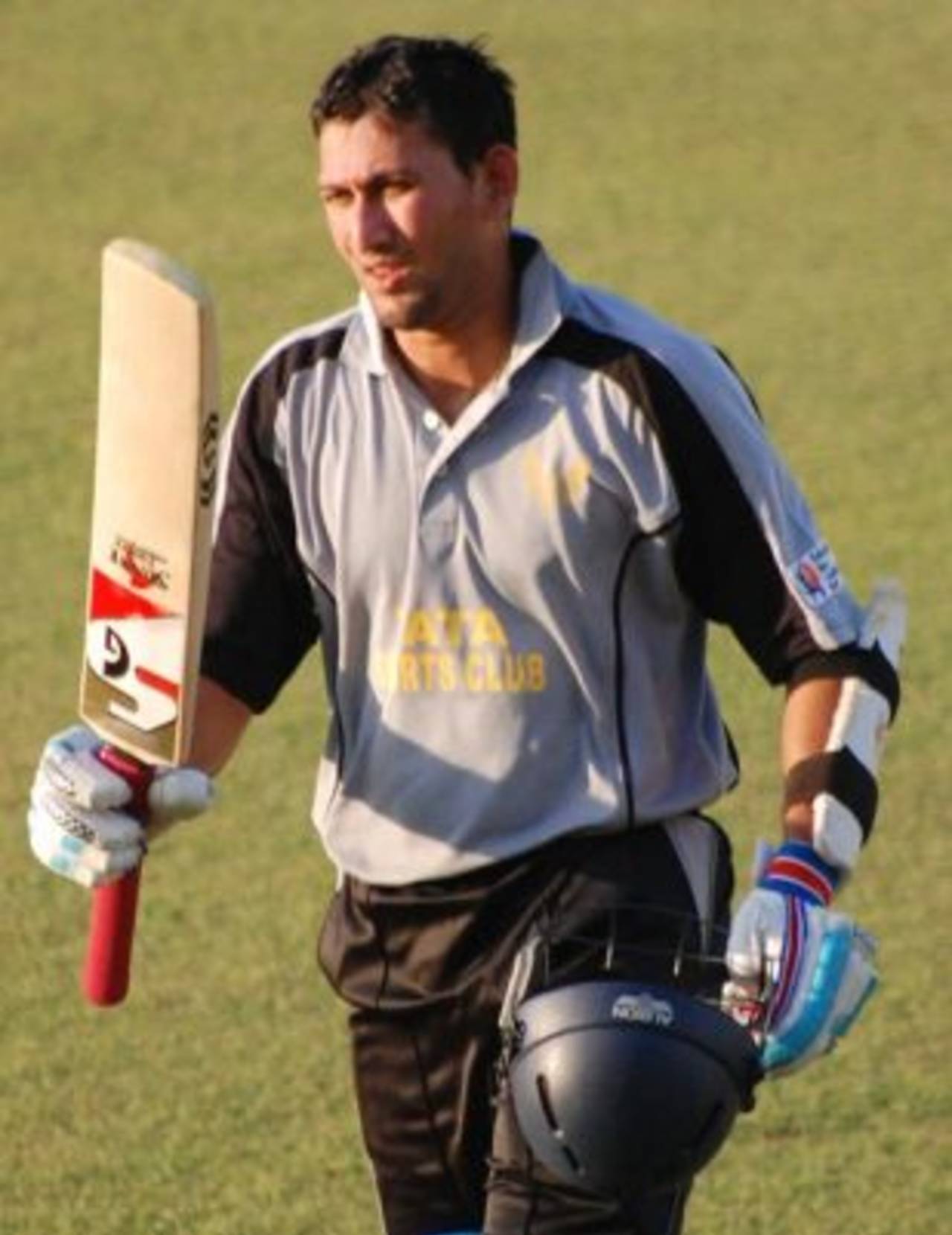A zero-sum game
A fantastic XI, made up of players known for their trysts with ducks
Zeeshan Mahmud
21-Sep-2013

Bombay duck, anyone? • ESPNcricinfo Ltd
"Is there any team where all players got out for ducks?" - Dad posed the question at the breakfast table. And thus began my search for Nothing.
The zero is easy to grasp, but with limitless possibilities. As it turned out, in 1913, ten batsmen in the Langport side were out for ducks in reply to Glastonbury's 80. H Weaver, the not-out batsman couldn't open his account either. More recently in 2006, all Goldsborough 2nd XI players perished to the dreaded sigil save for five extra runs.
Slowly this trifle anecdote snowballed from muse to obsession, to the extent that I came up with a XI on this theme: Don Bradman, Simon Katich, Joseph Darling (capt), Fred Grace(wk), Ajit Agarkar, Maninder Singh, Bobby Peel, William Attewell, Bhagwath Chandrasekhar, Chris Martin, Courtney Walsh.
The recurring motif in this XI is the cult of nought. Each player has a story to tell: The Don was known for his last match golden duck, Katich for a diamond duck in the Ashes, Darling for a pair when he was captain, Grace for a pair on debut, Agarkar for an unforgettable streak of ducks, Maninder for a laughing duck, Peel for pairs in successive Tests, Attewell for a king pair, Chandrasekhar for an Emperor pair, Martin for the record of most pairs in Test matches, and Walsh for most ducks in a career.
Care to take them on?
In his final Test innings, Don Bradman was bowled for 0 by Eric Hollies at The Oval. Bradman will be relieved I am not pairing him with Pud Thurlow, whose duck left Bradman stranded on 299 earlier in his career.
Having survived an early lbw appeal, Shane Watson sought to take a single off the fourth ball of the second Ashes Test in 2010-11. But Jonathan Trott's direct-hit at the stumps from square leg would dismiss the non-striker Simon Katich, who was yet to face a ball. It was the second instance of a diamond duck in the Ashes after Rodney Hogg, who was run out by Dennis Lillee in Birmingham in 1981.
It gets better. The next batsman Ricky Ponting would return with a golden duck, and Ryan Harris would go on to bag a king pair.
Ned Gregory was caught by Andrew Greenwood off James Lillywhite in the match between Australia and England in Melbourne in 1877 - the first ever Test. He became the first person to make a duck in Test cricket. However, Fred Grace became the first batsman to get a pair on debut.
Title of the first pair by a captain would belong to Joe Darling, who was out for golden ducks in both innings during the third Test in 1902 at Sheffield.
Ajit Agarkar of India has seven, sizzling, consecutive Test ducks against Australia thus earning the sobriquet "Bombay Duck".
Maninder Singh, Agarkar's countryman, was adjudged lbw off Greg Matthews of Australia for a duck in 1986, resulting in the second tied Test in cricket. A duck that ends the innings is known as a 'laughing' duck, but this was anything but a laughing matter.
Bobby Peel from England was the first player in Test cricket to be dismissed four consecutive times without scoring. He achieved this ignominy in the 1894-95 season. William Attewell is credited with first king pair on debut.
Chandrasekhar holds the record for the maximum number of king pairs, earning it twice in two Tests. He is also that rare cricketer whose wicket tally exceeds his runs. Chandrasekhar is one of only two players with this unique record. The other is Chris Martin, the New Zealand fast bowler who has seven pairs to his credit in Test cricket.
The record for the most ducks in Test cricket is held by West Indian Courtney Walsh, who was for nought 43 times.
Looks like the ducks are all in a row. What would a team of such bumbling, inept players do? You wouldn't quite expect them to send chills down the spine of the opponent.
But wait.
Courtney Walsh is also the second-leading wicket-taker among pacers, after McGrath, with 519 scalps. Chris Martin ran up an impressive tally of 233 wickets in Test cricket. Chandrasekhar won Wisden's best-bowling performance of the century for his 6 for 28 at The Oval. William Attewell popularised "off theory" in the 1890s, pitching the ball wide of the off stump while loading up the off-side to repeatedly frustrate the batsmen. Robert "Bobby" Peel's six on a sticky wicket in 1894 would help England win by a miraculous 10 runs after following-on for the first time in history.
Maninder Singh, protégé of Bishan Bedi, had excellent variation. He was known to bowl six balls in six different ways, varying length, flight and spin. For all his batting ineptitude, Ajit Agarkar has carved his name on the Lord's honour board with a 100.
The first six in Test cricket (and to reach his century) was hit out of the park by Joseph Darling. Simon Katich became the first Australian batsman since Mark Taylor to carry his bat through a completed Test innings, while scoring 131 at the Gabba against New Zealand. And Bradman - must we? - yes, Sir Donald Bradman retired with a career Test average of 99.94.
Ducks notwithstanding, this XI will take some beating.